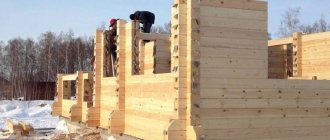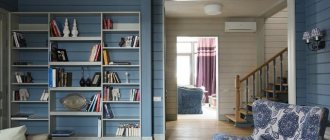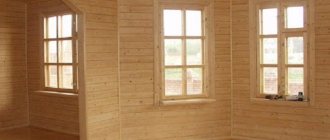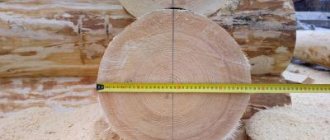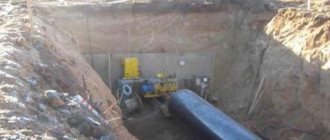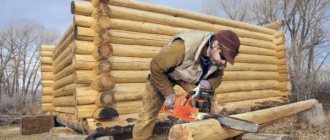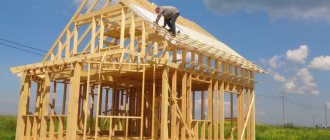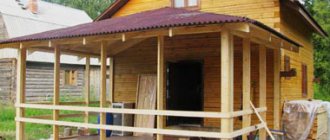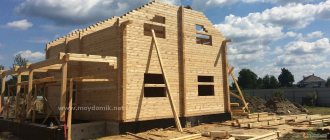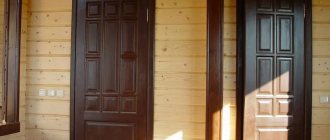In low-rise private construction, there is a trend towards a rational approach to the construction of cottages, dachas or country houses for permanent residence.
Everyone wants to reduce the cost of construction, but at the same time preserve the thermal conductivity and reliability of the building as much as possible. These requirements are met by wall blocks made of cellular concrete: foam concrete, aerated concrete and others. Manufacturers offer the market new construction and finishing materials.
In view of this abundance of alternatives, an unsavvy person has to solve a number of issues. Let's consider one of the most popular options in the form of step-by-step instructions - DIY construction from foam blocks.
Building a house from foam blocks with your own hands
Having decided to build a house on his own or to order, the owner needs to have in-depth knowledge for proper execution or control.
How to build a house from foam blocks without construction experience
We will skip the preparatory stage, because... this point is covered separately - where to start building a house on your site (step-by-step preparation: design, documents for individual housing construction, comparison of materials, when and in what sequence to fill the foundation, erect walls, install the roof, etc.).
First level: special attention to markings
In order for the first layer of blocks to lie flat, you need to work “under the rope”. Since the blocks should overhang the foundation slightly from the outside, the rope is stretched along the outer edge of the house.
It should run exactly along the edge of the block. Use a laser level to determine the height of the rope. This is especially important if the foundation has some skew.
Since the blocks can only be raised to the highest point, we use more masonry mortar where the level is lower.
Laying the second level of foam block with glue
After placing cement mortar on the foundation waterproofing, we install the first block and check it with a short level. If there is a misalignment, use a rubber hammer until the block lies flat.
Once we have achieved perfect evenness, we lay the second block, gluing both blocks with adhesive solution to each other. We again check the evenness with a level along the top surface and along the side wall of the future house.
It’s better not to rush and lay out the first layer perfectly evenly, because the errors will add up, resulting in a general warp of the wall.
Building a house from foam blocks - advantages and disadvantages
When planning to build a house from foam blocks, carefully study the positive aspects and disadvantages of porous building materials. The main advantages of foam block material:
- reduced thermal conductivity. It helps maintain a favorable temperature in the living space and also reduces heating costs;
- low weight of products with increased dimensions. This allows you to carry out the work yourself and significantly shorten the construction cycle;
- affordable price of products. The use of inexpensive building materials can significantly reduce the overall cost of constructing a building made of foam concrete;
- non-flammability. The use of foam concrete blocks that are resistant to open fire increases the fire safety of the building;
- long period of operation. The porous material does not crack as a result of freezing and maintains its integrity for a long time;
- ease of machining. Foam concrete is flexible, making it easy to make holes and adjust dimensions;
The final design is reliable, durable and durable, and the cost of construction will be quite affordable
- harmlessness of the material to health. Foam concrete contains no harmful ingredients;
- effective noise absorption. The structure of porous concrete prevents extraneous sounds from penetrating into the room;
- sufficient strength for the construction of residential buildings. Strength properties allow the construction of houses up to 9 m high from foam concrete;
- increased surface roughness of foam concrete. Decorative plasters and finishing coatings adhere well to porous blocks.
The walls of a foam block building do not place an increased load on the foundation, and during the construction process there is no need to use special lifting equipment.
Despite the advantages of the material, foam block buildings have weaknesses:
- require mandatory cladding to protect building materials from moisture absorption;
- they need to use special glue for foam block masonry, which is more expensive than the cost of a standard solution;
- have an unpresentable appearance, requiring additional decorative finishing of foam concrete.
Disadvantages also include increased tolerances on the size of blocks that require adjustment. Before building a house from foam blocks, study the operating experience of similar buildings, and also analyze the characteristics of the cellular material.
Its ability to retain heat allows the material to be used for the construction of houses in places with unstable climates.
Choosing a thermal conductivity material
First, let's solve the question of the material, namely: what foam blocks should be used when building a house in order to get the maximum effect from their use?
We have already written in our articles about foam blocks that there is a lot of low-quality material on the market. This is important to know. After all, the properties of the wall material directly affect the final result and the level of comfort of living in the constructed house.
Our information: the external enclosing structure, which directly includes the walls of the house, must have a thermal resistance equal to or greater than that of the area in which the house is being built.
This is a very important indicator.
- Often, when starting construction, people take information about the foundation, thickness and roof from various sources.
- Many, first of all, pay attention to construction technology, the possibility of using certain materials and techniques.
- At the same time, they forget about the most important thing, to pay attention to the region in which this structure was built.
- It often even happens that information about the foundation is taken from one source, and about the construction of walls from a completely different one.
- As a result: the end result does not live up to its expectations. Or the house turns out to be not quite warm, or too energy-consuming.
Nowadays, when energy prices are rising every day, this approach leads to unnecessary waste of funds for the entire life of the building or to the need for its reconstruction and completion. As you understand, this does not have a positive effect on the owner’s material well-being.
Roof installation. Step-by-step instruction
- Formation of the ceiling. For this, wooden beams or special slabs are used. They are tied with boards, the thickness of which is approximately 3 cm.
- Assembling the truss structure. It is better to do this on the ground, and then place the finished base on the walls.
- The finished rafters are sheathed with boards.
- Roofing felt is laid on top of them for waterproofing and mineral wool for thermal insulation.
- The final covering of the roof is tiles, slate, etc.
Advice. Treat all wooden elements with antiseptics.
Owners of foam block housing note that construction cannot be done without exterior finishing, for example, siding. If you neglect it, the house will soon lose its attractive appearance. In addition, due to weather changes, the foam block begins to deteriorate faster. Taking into account finishing costs, housing may be more expensive than construction using other materials. However, due to the relative ease of construction, environmental friendliness of the foam block and other advantages, these structures are becoming increasingly popular both for permanent residence and as an exclusively summer cottage option.
Construction of houses from foam blocks - selection and construction of the foundation
Various foundations are used for foam block buildings. The choice of the optimal option is determined by the following factors:
- depth of location of aquifers;
- freezing level;
- soil characteristics;
- load on the base.
When thinking about how to make a house out of foam concrete, many people prefer a strip foundation. This proven type of foundation is best suited for foam block buildings.
Among the advantages of building a house from foam concrete are the following qualities: environmental safety of the material
Construct the foundation for a foam block structure according to the following algorithm:
- Mark the outline of the building on the construction site.
- Remove vegetation, remove topsoil and grade the area.
- Dig a pit 60–80 cm deep, following the contour of the building.
- Fill the base of the trench with a sand-gravel mixture 20 cm thick.
- Assemble the formwork from panels or boards and secure the structure.
- Seal any gaps through which the solution may leak.
- Attach roofing felt to the inside of the formwork for waterproofing.
- Cut the rods to make the reinforcing mesh.
- Assemble the reinforcement cage and place it inside the formwork.
- Prepare concrete grade M400 and higher and pour it into the panel structure.
- Compact the concrete with a vibrator to release air bubbles.
- Lay polyethylene on the surface to prevent moisture evaporation.
- Do not load the concrete mass for four weeks.
- Disassemble the formwork after final hardening.
- Lay two rows of bricks, providing ventilation holes.
- Place steel mesh to reinforce the plinth masonry.
- Apply cement mortar in an even layer.
- Lay the second two courses of brickwork, check the horizontal position.
- Waterproof the base of the house with bitumen mastic or roofing felt.
If necessary, the foundation can be insulated. To do this, attach polystyrene foam to the outside of the base, and fill the pit with crushed stone. If there is an increased concentration of moisture in the soil, it is advisable to lay drainage lines around the perimeter of the foundation.
You can do the work yourself by performing the indicated operations step by step.
Due to the fact that foam concrete is not heavy and bulky, a building can be built much faster than using other building materials
Facade finishing
Since you are building a house, this means that you, first of all, want comfortable living conditions for yourself and your family. The appearance of the house is an important component of comfort, so the surface of the walls must be finished from the outside, otherwise the house will darken and turn into a “gloomy castle.” Moreover, the aesthetic component is not the main reason for the need for external work; finishing enhances the parameters of foam concrete, the house becomes stronger and warmer, and moreover, sound insulation characteristics increase.
Exterior decoration of the house
There are several ways to decorate a foam block house:
- Decorative panel. It is necessary to leave an air gap between the walls and hanging cladding.
- Mixtures that are used as concrete plaster.
- Stones or bricks for finishing.
- Painting with silicone, waterproof and steam-resistant paint.
As for the interior decoration, here “there are no comrades according to taste and color” - the interior design depends solely on your taste and imagination.
Third layer: foam for minimal seams
The third layer is usually easy to install. The blocks are easy to lay on the foam, and you no longer need to level them so carefully.
No, we continue to use the level every time, but as a rule there is no need to correct anything. However, the time has come to use the reinforcement.
We use foam for laying foam blocks
Iron reinforcement 15 mm thick is sufficient to create a rigid coupling between all blocks. You can throw two 20 mm reinforcement in the corners for greater reliability.
Interesting: the total distance between seams on a 10 meter wall will be reduced by 15-20 cm if you use foam instead of adhesive for blocks.
How to make a house from foam concrete - recommendations for building a box
Construct walls made of foam concrete following the sequence of operations:
- Place foam blocks in the corner areas of the base, stretch a cord between them.
- Lay the base row on the glue, checking the horizontal position.
- Cut a groove in the upper plane of the bottom row.
- Clean it from dust and debris, lay a reinforcing bar with a diameter of 10 mm.
- Apply adhesive to the surface, ensuring that the groove is completely filled.
- Lay 4 levels of foam concrete masonry, following the technology for installing the blocks.
- Reinforce the foam block masonry at the next level.
- Continue installing the foam blocks, reinforcing them at intervals of 4-5 rows.
- Create openings for doors and windows and reinforce them with steel lintels.
- Assemble the formwork for pouring the armored belt on the last tier of masonry.
- Tie the reinforcement frame with knitting wire and place it in the formwork.
- Concrete the reinforced belt for the ceiling, plan the upper plane.
Now that the foam concrete walls have been erected, all that remains is to build the roof. Foam block house - building a roof
To build the roof of a house, the following work must be done:
- Install rafter beams.
- Perform the sheathing.
- Lay insulating material.
- Install the roof.
The ceiling can be made from various building materials, depending on the project and financial capabilities. The complex of measures for the construction of a foam block house is completed by the installation of windows and doors, facade finishing, as well as interior work.
Possible errors and tips for eliminating them
Table 2. Common errors, methods for eliminating and preventing them:
| Description | Useful tips |
| One of the most common mistakes is trying to save on the quality of foam concrete blocks. | Purchase material only from trusted suppliers, avoid handicraft production. For the construction of a residential building, give preference to 1 and, as a last resort, 2 categories of accuracy. This will reduce the consumption of glue and plaster in the future. |
| Errors associated with calculating the optimal block thickness. | Thin walls will make the house cold. Give preference, especially in the middle region, a wall width of 300 to 400 mm. |
| Some would-be builders and inexperienced developers lose sight of the presence of such an important part in construction as an armored belt. | The consequence of its absence may be cracks and a general loss of structural strength when exposed to external influences. The presence of an armored belt is mandatory. |
| A less common mistake is using a block for other purposes. | Do not forget that you cannot build a reliable house from a heat-insulating foam concrete block. Be sure to take this point into account when purchasing material. The density and strength of the block must correspond to the future load. |
| Lack of important elements that perform the functions of supporting load-bearing structures, for example, reinforced racks | The consequence of this may be deformation of the floor from the load and subsidence. |
Second block level: residual alignment
For the second layer, masonry mortar can no longer be used. If any errors remain, or the solution has settled too much in some place, use an adhesive solution.
If you are sure that everything is smooth, you can use foam. Sometimes the entire second layer is laid on foam, except for 1-3 blocks that unexpectedly fall into the masonry mortar.
Correct application of the solution: create an air layer inside that retains heat
Foam, as we wrote above, is very easy to work with. Before applying it, the block is moistened with water, for which a wide brush is useful.
The foam is pressed under pressure in two parallel strips onto the bottom block and onto the side wall.
It holds the building material securely and dries very quickly. Try not to get yourself dirty, as it is extremely difficult to remove foam from clothes or hair.
Just remember the rule: each laid block must be checked by level from above and from the side.
Building a house from foam block - what materials and tools are needed
List of building materials required for construction:
- blocks used as the main building material;
- special glue sold in crumbly form;
- reinforcing bars used in the reinforcement process.
Materials purchased in advance should be protected from moisture.
For construction work you will need various equipment and special tools:
- drill with a nozzle for mixing the adhesive mass;
- “grinder” for cutting reinforcement and fine-tuning the geometry of block products;
- rubberized mallet for compacting foam blocks during laying;
- a plane for foam concrete, making it easier to level out uneven surfaces;
- a hacksaw necessary for cutting foam concrete;
- spatula with teeth for applying the composition;
- construction cord, which is a guide when laying foam blocks;
- level for quality control of work performed;
- plumb line to control deviation from the vertical;
- spacious container for preparing the working mixture;
- a spatula with a flat working part for grouting.
To independently prepare the foundation solution, you will also need a concrete mixer.
To cut the foam block you do not need to use special tools; you can easily cut the material using a hacksaw
Construction of foam block houses - performing calculations
Before starting construction activities, it is important to correctly perform the calculations:
- determine the dimensions and layout of the building;
- calculate the need for material.
When determining the size of the house, consider the following points:
- land area;
- layout option;
- total expected costs.
Calculate the need for foam concrete blocks using the following algorithm:
- Determine the length of the foam block walls by summing up their dimensions.
- Calculate the area of the walls by multiplying the perimeter by the height.
- Subtract the area of the openings from the resulting value.
- Divide the result by the lateral surface area of the product.
Let's calculate the need for material for a building with dimensions of 6x8 m and a height of 2.8 m, which is planned to be built from blocks 59.8 cm long and 19.8 cm high:
- Let's calculate the area of the walls - (6+8+6+8)x2.8=78.4 m2.
- Let's determine the area of the door (0.8x2=1.6 m2) and window (1.4x1.6=2.24 m2).
- Let's sum up the area of the openings - 1.6 + 2.24 = 3.84 m2.
- Let's calculate the net area - 78.4-3.84 = 74.56 m2.
- Let's determine the area of the side surface of the blocks - 0.598x0.198= 0.118 m2.
- Let's calculate the need for material - 74.56:0.118=631.8.
We will definitely reinforce door and window openings.
Rounding the resulting value to a whole number, we get the need for building materials - 632 blocks. By comparing the amount of costs for purchasing block material for a house with dimensions of 6x8 m with the amount of brick for the construction of a building with the same dimensions, you can be convinced of the main advantage of the blocks - an affordable price.
